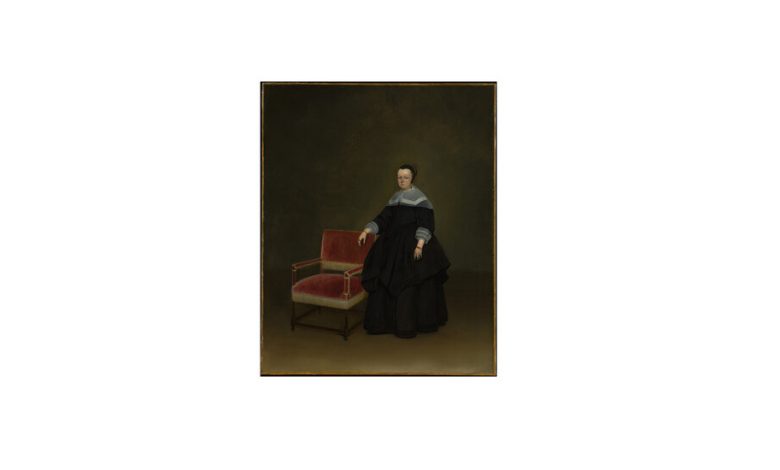Looking to the Dutch Masters for Answers to Life’s Big Questions

THE UPSIDE-DOWN WORLD: Meetings With the Dutch Masters, by Benjamin Moser
When he moved from New York to the Netherlands in 2002, Benjamin Moser was at the beginning of both his career and a love affair — a triply tenuous situation. He found comfort in the country’s museums, in particular the artists of the 17th-century Dutch Golden Age, an era characterized by social mobility, scientific innovation and economic expansion (as well as rampant colonialism). In “The Upside-Down World,” Moser covers some 18 of the period’s painters, both the famous (Rembrandt, Vermeer, Frans Hals) and the lesser known (Adriaen Coorte, Hendrick Avercamp, Rachel Ruysch). He describes the book as the record of an education, learning about and from artists who guided him through “an uncertain life in a new land.”
In their work Moser saw the same sorts of big questions he was then asking himself. “Why do we make art, and why do we need it?” he writes in the introduction. “What is the artist’s duty to others, to society, to self? … How, in a word, are we supposed to live?” Despite pitching the book as a melding of art history and personal exploration, Moser is reluctant to peruse this line of inquiry. In the pages between the introduction and afterword, details about his own struggles are scarce.
Adapted from essays published over the past two decades in various publications, the book reads more like a collection than a single, fluid account. There’s a good deal of repetition from chapter to chapter — each considering a different artist and a handful of his or her works — and together the book presents a fragmented sense of the era’s political and cultural history. In several cases, so few biographical details are available that Moser makes a joke of it. But he’s undeterred, eking out as much value as he can from minimal information. Moser, who won the Pulitzer Prize for a biography of Susan Sontag, is keen to make “novelistic” sense of each painter’s motivations and work, and his urge to construct tidy narratives may be the most frustrating aspect of the book.
The dots that describe a chandelier in a Vermeer painting, for instance, offer an opportunity for Moser to “clutch at the few scraps” of Vermeer’s known history and make unhelpful conclusions. “He was a creature of light, and not of darkness,” Moser writes. “His paintings are the image of a man who saw light and saw darkness — and made his choice.” Too busy theorizing to see the work that’s right in front of him, Moser writes with little feel for the human story in the work, and the ways that looking at art can be enlivening on its own.

Some of his assessments invite suspicion, if not bafflement. Art history, he writes, is “so often a matter of paint chips and auction records” (would he argue that the history of literature is a story of best sellers?), as though it were a revelation to find that it “can be as emotionally charged as the works it studies.” He explains Gerard Ter Borch’s dark backgrounds by speculating that the painter “did not have an advanced understanding of perspective,” and that “he would have been best advised to keep the backgrounds shadowy.” That’s quite a leap. Moser mentions that Ter Borch spent time in Madrid but not his exposure to Diego Velázquez’s bodegones, or “tavern scenes,” and portraits of black-clad figures with similarly austere, brownish-black backgrounds.
Other analyses are colored by the author’s own superficial biases. He writes qualitatively of Jan Lievens’s paintings of “old people” as either “repellent” or “merely disgusting” and dismisses two Vermeers as being “histrionic” and “repulsive.” He describes technical effects as “show-offy artist’s tricks” and relies too often on vague words like “charm,” “charisma” and “mood” to convey complex qualities about a painter’s work. “You can almost feel a gust of wind blowing over the books that lie open on the table,” he writes halfheartedly of the “magical” effects in a Lievens still life.
The reason for his fixation on biography comes into focus in the book’s penultimate chapter. The subject of art is “irrelevant,” he argues. “When you look at a vase of flowers painted by Picasso, or van Gogh, or Manet, you are not seeing the flowers; you are not even interested in the flowers. You are interested in Picasso, van Gogh or Manet, whose personalities, no matter what the subject, come through so clearly.”
The afterword is a great disgorging of sentiments and reflections that would have better served the book had they been woven into it. “I lived in my own foreigner’s Europe,” he says, a wondrous and timeless world so different from his own. I wished he’d explored this tension between his present reality and the escape of art in the preceding chapters.
But the book’s initial promise never quite materializes. “I wanted to learn something about art because I wanted to learn something about life,” he writes. But whatever insight he may have gained isn’t to be found here.
THE UPSIDE-DOWN WORLD: Meetings With the Dutch Masters | By Benjamin Moser | Illustrated | 379 pp. | Liveright | $39.95




